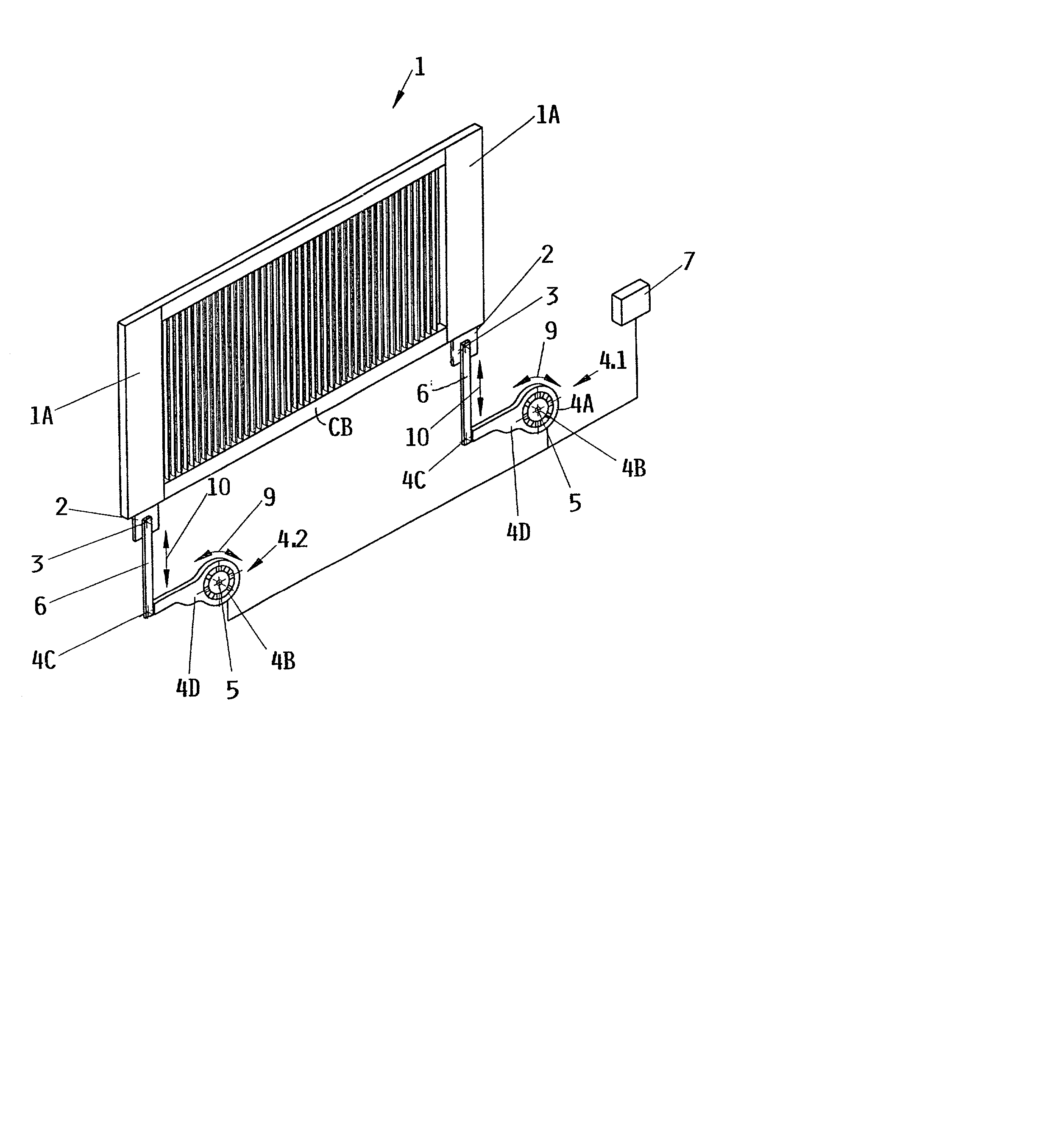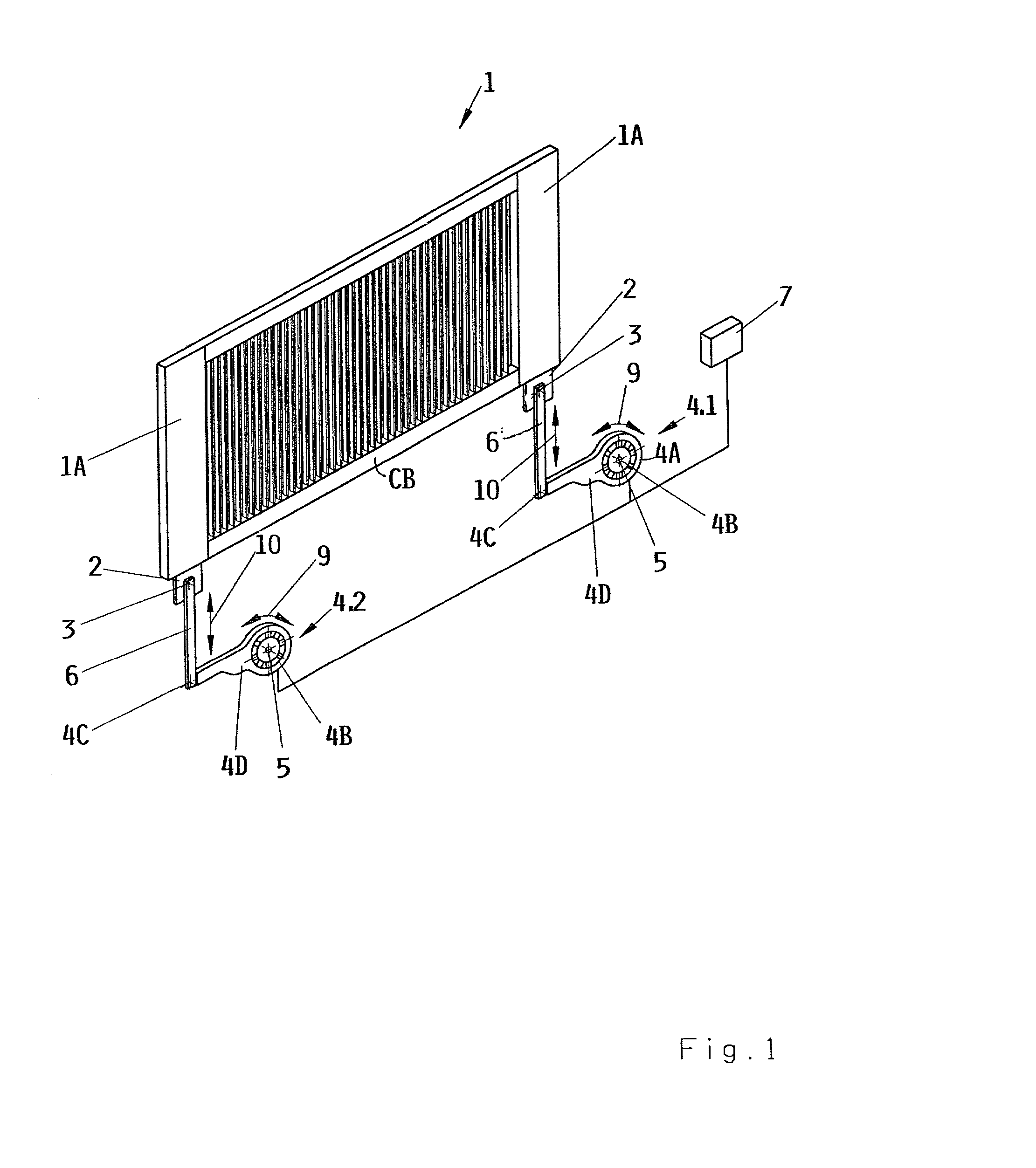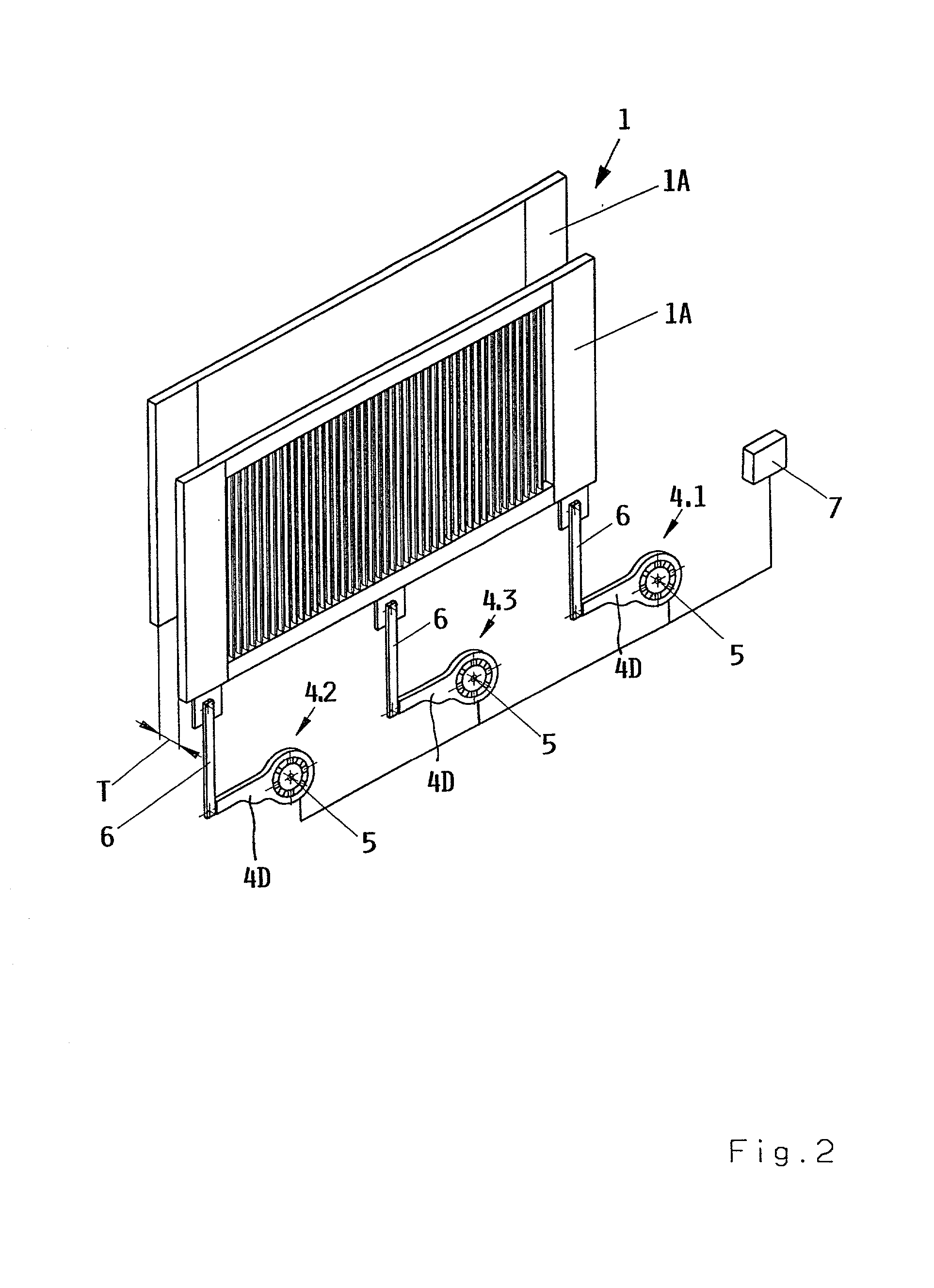Drive mechanism for shed forming components of a loom
a technology of drive mechanism and forming component, which is applied in the direction of weaving, textiles and papermaking, looms, etc., can solve the problems of inability to use conventional heald shafts, inability to retrofit existing looms, and the need for special shed forming components of looms
- Summary
- Abstract
- Description
- Claims
- Application Information
AI Technical Summary
Benefits of technology
Problems solved by technology
Method used
Image
Examples
Embodiment Construction
[0030] FIG. 1 shows a heald frame 1 having lateral frame sections 1A provided with coupling projections 2. The coupling projections or extensions 2 may be integral parts of the lateral frame sections 1A. The coupling projections 2 form part of a first articulated coupling 3 operatively connecting an upper end of a push-pull rod 6 to the heald frame 1. A second articulated coupling 4C, 11C connects a lower end of the push-pull rod 6 to a drive lever or arm to be described in more detail below. The first and second couplings 3, 4C, 11C or at least the second couplings are preferably so-called quick or rapid action couplings or snap locks which as such are known, for example from German Patent Publication DE 195 48 848 B1.
[0031] Although FIG. 1 shows two symmetrically arranged drives 4.1 and 4.2, it is possible to provide but one centrally arranged drive 4.3 which would be centrally coupled to a horizontal cross beam CB of the heald frame 1. Such a central connection of a single drive ...
PUM
 Login to View More
Login to View More Abstract
Description
Claims
Application Information
 Login to View More
Login to View More - R&D
- Intellectual Property
- Life Sciences
- Materials
- Tech Scout
- Unparalleled Data Quality
- Higher Quality Content
- 60% Fewer Hallucinations
Browse by: Latest US Patents, China's latest patents, Technical Efficacy Thesaurus, Application Domain, Technology Topic, Popular Technical Reports.
© 2025 PatSnap. All rights reserved.Legal|Privacy policy|Modern Slavery Act Transparency Statement|Sitemap|About US| Contact US: help@patsnap.com



